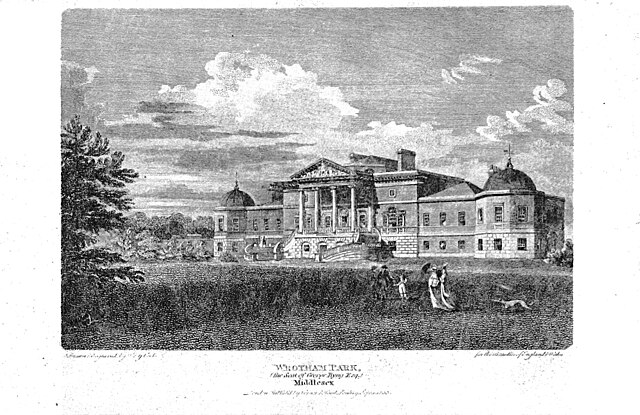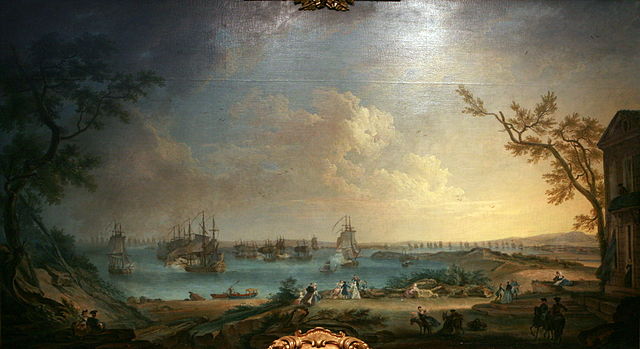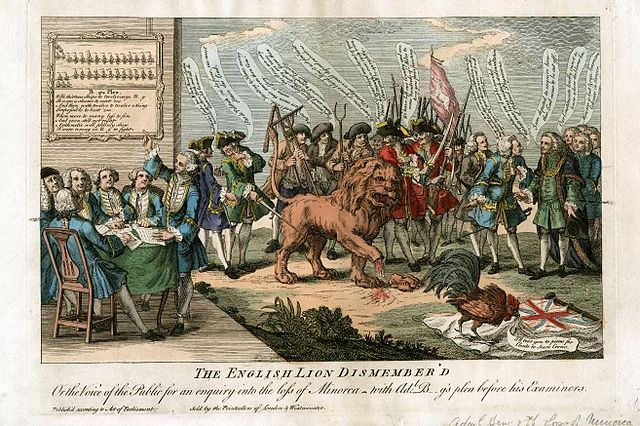Admiral John Byng was a British Royal Navy officer who was court-martialled and executed by firing squad. After joining the navy at the age of thirteen, he participated at the Battle of Cape Passaro in 1718. Over the next thirty years he built up a reputation as a solid naval officer and received promotion to vice-admiral in 1747. He also served as Commodore-Governor of Newfoundland Colony in 1742, Commander-in-Chief, Leith, 1745 to 1746 and was a member of Parliament from 1751 until his death.
Portrait of John Byng by Thomas Hudson, 1749
1820 view of Wrotham Park in Hertfordshire, the house built by John Byng
We have lately been told Of two admirals bold, Who engag'd in a terrible Fight: They met after Noon, Which I think was too soon, As they both ran away before Night.
The Shooting of Admiral Byng, artist unknown
The Battle of Minorca was a naval battle between French and British fleets. It was the opening sea battle of the Seven Years' War in the European theatre. Shortly after the war began British and French squadrons met off the Mediterranean island of Minorca. The French won the battle. The subsequent decision by the British to withdraw to Gibraltar handed France a strategic victory and led directly to the Fall of Minorca.
The departure of the French squadron on 10 April 1756 for the attack against Port Mahon, by Nicolas Ozanne
Attack and capture of Fort St. Philip on the island of Minorca, 29 June 1756, after the naval battle.
English and French fleets
The English Lion dismembered after the French conquer the island of Menorca.








